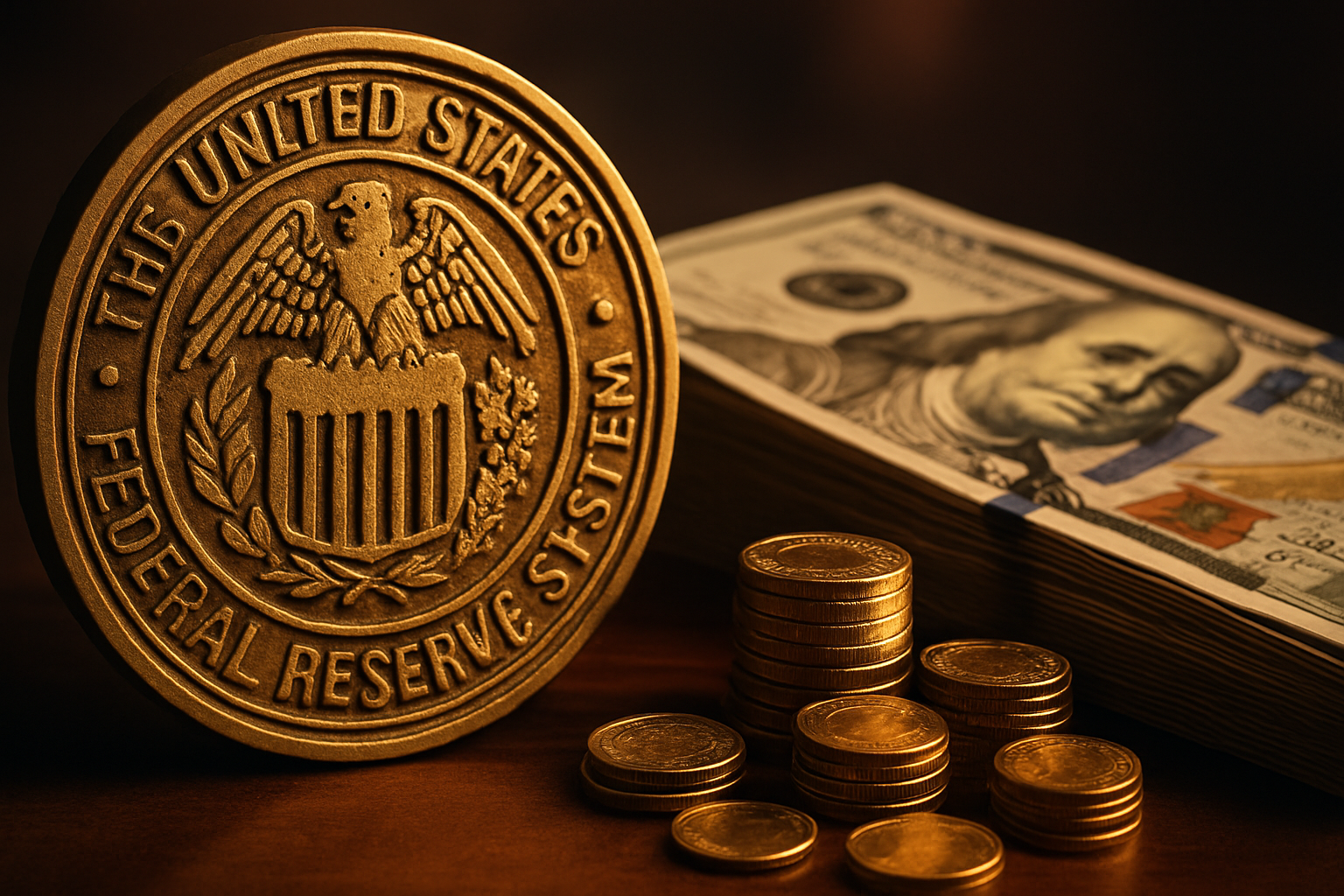Navigating Economic Uncertainty in 2023
Each week as I decide to write a new post to our blog, there is always an obvious goal. That goal is to be informative as possible with timely data.
Here's why I think it's super important to keep a pulse on both the domestic and global economies, especially in these uncertain times:
Risk Management: Look, no one wants their assets to tank. Understanding what's happening economically is like a seatbelt for your investments. You get a better grip on what's risky and what's not.
Quick Moves: Markets don't wait for anyone. If you're well-informed, you can pivot your strategies in real-time, buying or selling assets as conditions change.
Dealing with uncertainty: There is an old saying; “The only thing certain is uncertainty.” It pretty much sums up the idea that change and unpredictability are the only constants in life, especially when it comes to things like investments and economies.
Global Domino Effect: One country's economic hiccup can become another's full-blown recession. Keeping tabs on the world stage can help you brace for impact or even capitalize on the situation.
Policy Watch: When the economy gets shaky, governments pull all sorts of levers; interest rates, trade policies, and so on. Understanding these changes as they happen can be crucial for your investment strategy.
Consumer Vibes: People act differently when they're uncertain about the economy. They might spend less or opt for safer investments. Recognizing these trends can guide your investment choices.
Protecting Your Nest Egg: At the end of the day, this is about safeguarding your financial future. The more you know, the better you can protect and grow your wealth.
For too long, we have been seeing our country facing historic challenges. This will pass, and those who remain patient will be in position to reap rewards.
Is Oil Going To $100 Per Barrel?
Breitbart economics and finance editor and author John Carney told GB News Wednesday that U.S. oil prices will likely surge to $100 per barrel adding President Joe Biden administration has made several energy policy mistakes.
Carney said, “I think oil is definitely going to reach $100 a barrel, and I don’t see a reason why it’s going to come down. The Biden administration really messed up by releasing so much from the strategic reserves right now. They have nothing left. They fired all the bullets, more or less, and so there’s not a source of oil that can be released into the market to break down prices. The Saudis and the Russians want oil up near $100, and that’s where it’s going to go.” - Breitbart
High oil prices can have a significant impact on an economy.
Firstly, it affects the cost of transportation, which in turn affects the prices of goods and services. As oil is a crucial input in transportation, higher oil prices result in increased production costs for businesses that rely on transportation for their operations. This, in turn, leads to increased prices for consumers, as companies pass on the additional costs. As a result, the purchasing power of consumers is reduced, leading to a decrease in overall consumer spending. This decline in consumer spending can have a cascading effect on businesses, particularly those in industries heavily dependent on consumer demand, such as retail and tourism.
Secondly, high oil prices can impact the balance of trade for a country. Countries that are net importers of oil will see their trade deficit widen as the cost of importing oil increases. This, in turn, exerts downward pressure on the country's currency, making imports more expensive and exports less competitive. Ultimately, this can result in a decrease in export revenue and a worsening trade imbalance. Moreover, higher oil prices can lead to increased inflationary pressures in an economy. As businesses face higher production costs, they may pass on these costs to consumers through higher prices. This erodes the purchasing power of consumers and can lead to a decrease in consumer confidence and economic growth.
And this at a time when things are weak in most facets of our economy.
Charles Hugh Smith - Why Corporate Profits Will Fall 50%
1. Reversion to the mean: profits that are double the historical average as a percentage of Gross Domestic Product (GDP) are highly likely not to be a sustainable New Normal. The far more likely track is a reversion to the historical average, which is about 50% below corporate profits' current 12% of GDP. Permanently elevated plateaus of stock valuations and corporate profits are both compelling chimera.
2. The Boost phase of Globalization has ended. The era of hyper-globalization is clearly visible on the charts of corporate profits and corporate profits as a percentage of GDP: right after China was accepted into the WTO in 2001, US corporate profits skyrocketed in both nominal dollars and as a percentage of the US economy (GDP).
Globalization's boost phase that sent corporate profits into orbit has rounded the S-Curve and is now in the stagnation / decline phase.
The reasons why hyper-globalization rocketed corporate profits to unprecedented heights are both well-known and terribly inconvenient to the happy story that globalization will magically generate unprecedented profits forever.
3. Quality and durability have been gutted and there's no more profit to pluck from buying lower-quality components and inputs, as the cheapest, lowest-quality components and inputs have already been standardized.
Hyper-globalization provided the ideal cover for the systemic collapse of quality and durability. This corporate institutionalization of planned obsolescence, abysmal quality and shrinkflation all boosted profits enormously, but there's nothing left at the bottom of the barrel; corporations have licked the profitable slop of planned obsolescence, abysmal quality and shrinkflation clean.
The super-efficient global supply chains are also breaking under the strain of geopolitical and national security priorities, and the difficulties of replacing existing supply chains, which depend on cheap energy and transport and a massive infrastructure to serve trade that non-industrialized developing nations cannot duplicate.
4. Hyper-financialization has also entered the decay-collapse phase. Hyper-financialization drove corporate profits in two ways:
A. As borrowing costs dropped to unprecedented lows, corporations could borrow vast sums at near-zero rates to scoop up other companies with positive cash flow, gut the quality and staff and scoop up the resulting cost reductions as profits.
B. Consumers could borrow vast sums at low rates to buy products that they would not have been able to afford at historically average interest rates. For example, with 1.9% (or even zero) financing, new autos and trucks became more affordable. With demand strong, corporations could keep prices high and reap the gains of stronger sales.
Now that zero-interest rate policy (ZIRP) has ended its disruptive reign, the tailwinds of zero rates have reversed into the headwinds of structurally higher rates.
5. The asymmetric distribution of the economy's output favoring corporations at the expense of labor is finally shifting. After 45 years of capital skimming $50 trillion from labor, rising rates of disability, unfavorable demographics, systemic healthcare inflation and social dynamics are pushing labor costs higher.
6. Debt saturation. Corporate profits soared from $800 billion annually to $3.5 trillion in 2022 on the tailwinds of public and private debt skyrocketing from $30 trillion in 2000 to $95 trillion today. With the era of zero cost of debt over, we've entered an era of debt saturation: households, government and enterprises can no longer afford to take on more debt without triggering unintended consequences or slashing discretionary spending to service the higher costs of new and existing debts.
Since growth depends on the ceaseless expansion of debt and the discretionary spending it enables, growth reverses along with discretionary spending. Corporations will find it impossible to keep prices at nosebleed levels as consumer demand plummets while costs remain sticky.
Navigating the economic landscape these days is more like white-water rafting than a serene paddle downstream. While uncertainty is the only constant, staying well-informed can serve as your lifejacket.
Keep tabs on both the domestic and global economies, pivot your investment strategies as needed, and above all, remain patient.
These challenging times will pass, and those who have armed themselves with knowledge and flexibility will be in the best position to reap the rewards. Stay tuned for more timely insights, and until then, keep your financial seatbelt fastened.




